17,99 €
Versandfertig in über 4 Wochen

Gebundenes Buch
Vom PJ bis zur Facharztprüfung. Ein Ratgeber für in der Klinik tätige Mediziner
2. Aufl.
16. Juni 2016
Medi-Learn
eBook, PDF
28. März 2006
Springer Berlin Heidelberg
Broschiertes Buch
Designs, Technologies and Performance
1st ed. 2019
11. September 2020
CERN / Fermi Research Alliance / Springer / Springer International Publishing / Springer, Berlin
978-3-030-16120-0
Gebundenes Buch
Designs, Technologies and Performance
1st ed. 2019
20. September 2019
CERN / Fermi Research Alliance / Springer / Springer International Publishing / Springer, Berlin
978-3-030-16117-0
Ähnlichkeitssuche: Fact®Finder von OMIKRON
